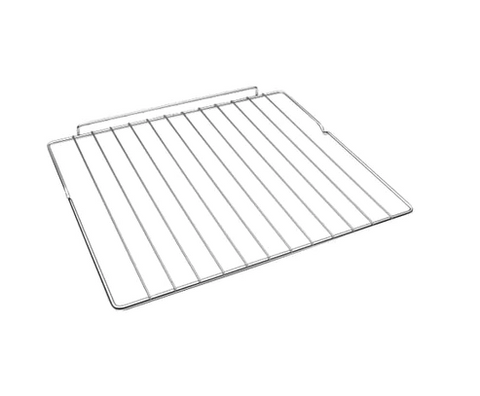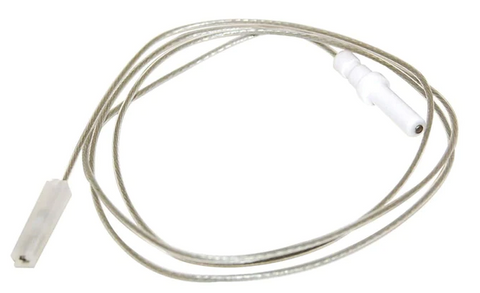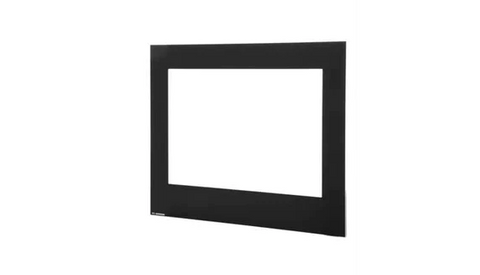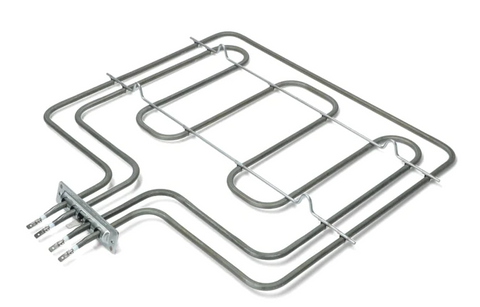Ovens are the workhorses of the kitchen. They bake, roast, broil, and make culinary magic happen. But ovens, like any appliance, have components that can break down or need replacing. This guide will help you understand the key oven parts of various parts like oven symbols, thermostats like Bosch oven symbols, and DeLonghi oven symbols, and how to troubleshoot them.
Oven Shelves

Oven Shelves provides the platforms for your edible cooking creations.
-
Types:
Wire Racks: These wire racks are standard, offering good airflow.
Telescoping Racks: These telescoping racks slide out for safe and convenient access.
Flat Baking Racks: Ideal for cookies and other baked goods.
-
Placement:
Adjust shelf positions to fit what you cook. More shelves = more cooking options.
-
Cleaning:
Remove shelves for regular cleaning. Soaking helps get off stubborn food residue.
Oven Lamps

A bit of oven lamp light helps you check on your food without opening the oven door and losing heat.
-
Types:
Most use incandescent or halogen bulbs designed for high temperatures.
-
Failure:
Oven lightbulbs burn out eventually, just like any bulb.
-
Replacement:
Find the right bulb based on your oven model. It's usually a simple swap.
Knobs

Control knobs are your interface with the oven. They set the temperature, cooking mode, and timers.
-
Wear and Tear:
Oven Knobs get a lot of use and can get loose or sticky over time.
-
Replacement:
Finding matching oven replacement knobs may depend on your oven model. Sometimes a good cleaning fixes sticky knobs.
Electrical Components

Oven electrical is powered by complex electrical systems. Most DIY repairs in this area aren't advisable!
-
Control Board:
This is the oven's brain, managing temperatures and functions. Issues here often need a technician.
-
Wiring:
Wires connect everything. Burnt or damaged wires are a safety hazard – call a professional!
-
Fuses/Breakers:
Ovens draw a fair bit of power. Check your circuit breaker if your oven won't turn on at all
Inner Door

The inner oven door seals in heat and usually has a glass window to let you peek inside.
-
Glass:
Oven glass is heat-resistant, but it can still break from impacts or sudden temperature changes. Replacement usually involves taking apart the door.
-
Seal:
The oven seal around the door is essential for maintaining even temperatures. Replace if it's torn, loose, or brittle.
Heating Elements

These oven elements are the heat source of your oven! Electric ovens have top and bottom elements, while gas ovens have a burner.
-
Electric Element Failure:
Burning out or partial failure (weak heating) means it's time to replace the element. Find the right type based on your oven.
-
Gas Burner Issues:
Clogged burner holes or igniter problems can prevent proper flames. This may require a technician to fix it.
Troubleshooting Your Oven
Here are common problems and what to check:
-
Uneven Baking
Temperature:
Use an oven thermometer to check if your oven's temperature is accurate. Calibrate if needed.
Shelf Placement:
Ensure the baking dish is centered in the oven for even airflow.
Hot Spots:
Some ovens have this issue. Rotate your dish halfway through baking to compensate.
-
Won't Reach Temperature
Elements/Burner:
Check for element failure in electric ovens or burner ignition issues in gas models.
Thermostat:
A faulty oven thermostat can misreport temperatures to the control board. This might need a technician's help.
-
Foods Burning or Undercooking
Temperature:
Again, check for accuracy with an oven thermometer.
Baking Time:
Each oven is different! Adjust times and temperatures as needed for your specific appliance.
Oven Care Tips
-
Clean Regularly:
Wipe up spills quickly. Deep-clean periodically, but follow your oven's instructions (some have self-cleaning cycles).
-
Don't Overload:
Overcrowded ovens cook unevenly.
-
Baking Stones:
These can help regulate the temperature of baking breads and pizzas.
-
Avoid Foil on the Bottom:
This can interfere with heat distribution and damage your oven.
Final Words
Some oven repairs involve high-voltage electricity or gas lines. Unless you are very experienced, call an appliance repair technician for these complex fixes. But know that understanding your appliance empowers you to do simple repairs yourself! Join the Steve Appliances community. Get the parts you need, and the support you deserve.

